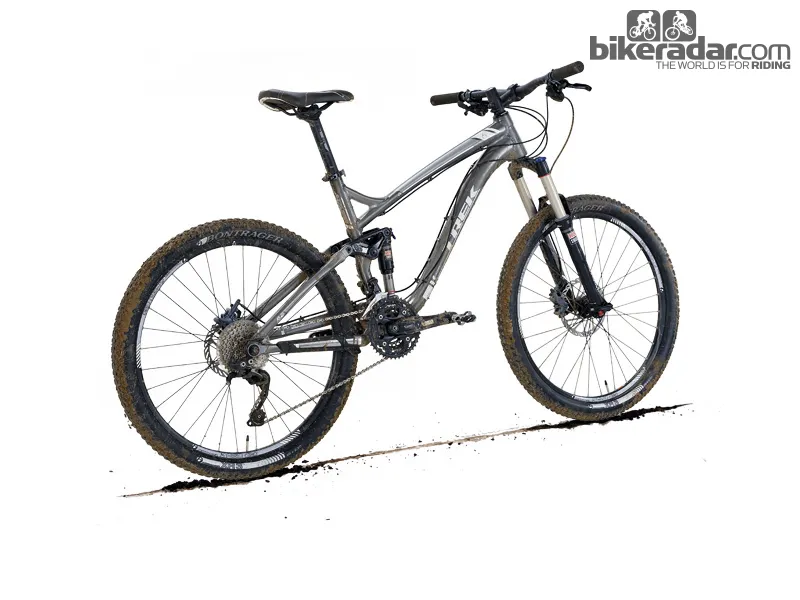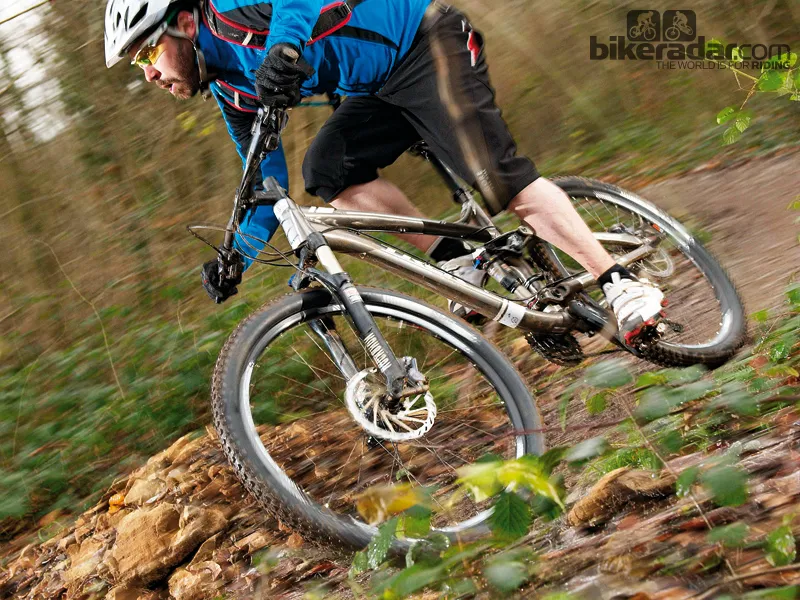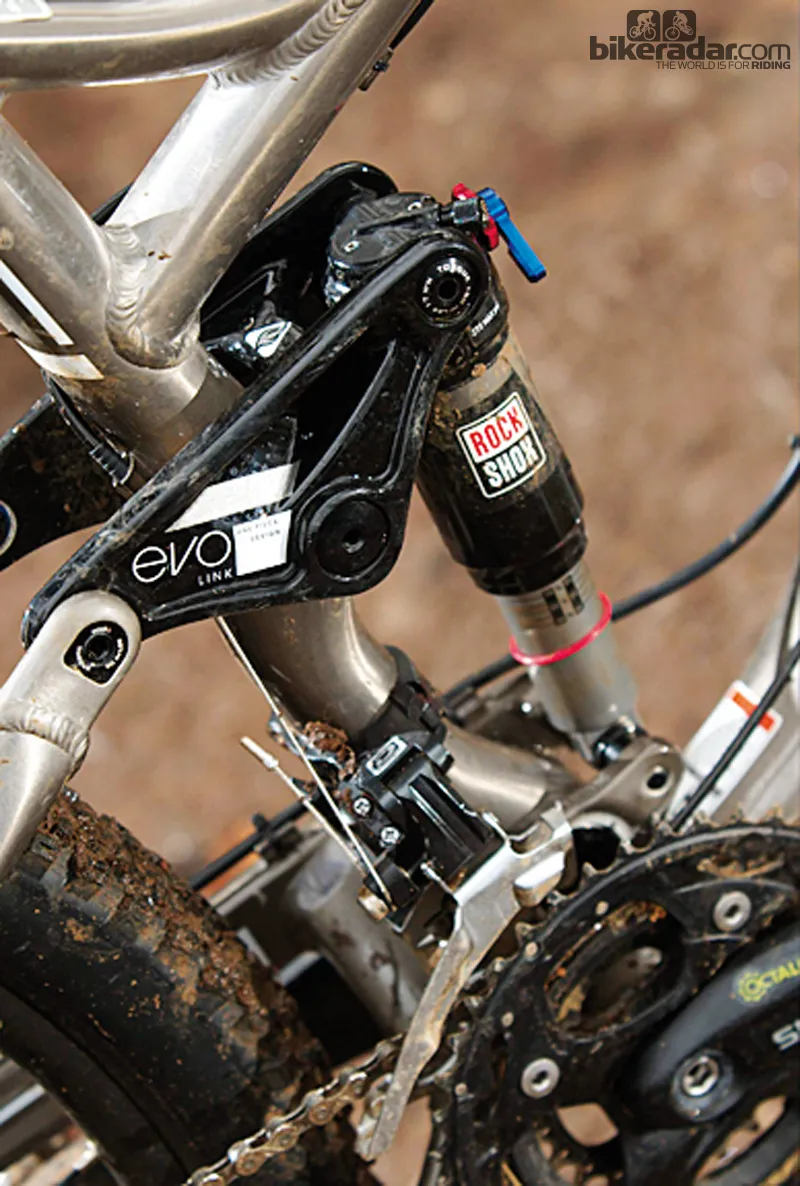The EX 6 is the second cheapest in Trek’s Fuel lineup, and the whole line’s had a travel bump to 130mm front and rear – bar the cheaper EX 5, which makes do with a 120mm fork.
Ride & handling: Confidence inspiring, balanced handling
Without the two-stage DRCV shock there isn’t quite the sensation of having more than the actual travel, although the fact the EX does now have more helps. Even with the simpler Monarch shock, the Fuel is untroubled by most conditions. The extra 10mm hasn’t transformed this into an entirely different kind of bike, however – it handles the same and hasn’t put on weight.
The Fuel’s geometry has been gradually slackening over the years, although Trek’s goal is to deliver a great all-rounder so it’s not quite as laid back as some of the bikes here. The 68-degree head angle is still good for high-speed stability and poise, and the big 720mm bars give plenty of leverage to push it into corners, where it proves a vice-free and balanced handler.
On climbs the Fuel’s relatively low weight pays dividends. Trek haven’t gone for the extra-steep seat angle of some of the competition, but the cockpit layout works well for sustained pedalling. The back end is stable under power and unobtrusive over steppy, square-edge bumps.

Frame & equipment: Light for the price but Octalink seems low rent
While the Fuel EX frame looks the same across the range (except the carbon fibre models) there are some variations. The cheapest three (including this EX 6) get a conventional threaded bottom bracket, a band-on front mech and IS rear brake mount – by the time you get to the EX 8 you find a more up-to-the-minute press-fit bottom bracket shell, a direct-mount front mech and a post mount for the rear brake.
All Fuel EXs have a tapered head tube now, though the 130mm Sektor fork fitted here is a regular straight-steerer model. Nevertheless, the futureproofing is welcome.
The Fuel offers the expected Trek fundamentals, with the ABP concentric rear axle/pivot design and the floating shock – it’s mounted between the magnesium rocker and the swingarm, so it’s driven from both ends. You don’t get the clever twin-chamber DRCV shock found higher up the range, as it’s fitted with a RockShox Monarch RL instead.
There are no great surprises elsewhere, with a 3x10 Shimano mostly-Deore transmission – the rear mech gets an upgrade to SLX, although it’s not an anti-slap Shadow Plus unit.
The inclusion of an Octalink splined bottom bracket and chainset looks a bit penny-pinching (although in fairness the Trek is relatively cheap for its niche) – an HTII setup is easier to work on, but there’s nothing in it when it comes to shifting. While it may look slightly ‘budget,’ the fact the Fuel is light shows that Trek know what they’re doing with spec.
The high-end Fuels have always been great bikes, but we’ve sometimes found the cheaper models obviously compromised to hit a price. The EX 6 is entirely convincing. You get what you need from its pricier stablemates, and it’s a well-rounded ride.
This article was originally published in What Mountain Bike magazine, available on Apple Newsstand and Zinio.

